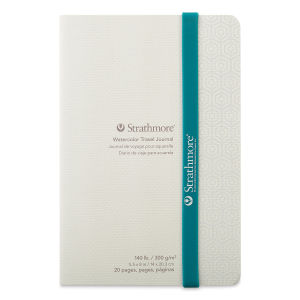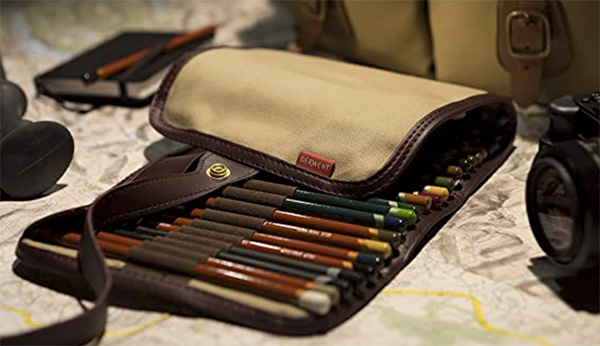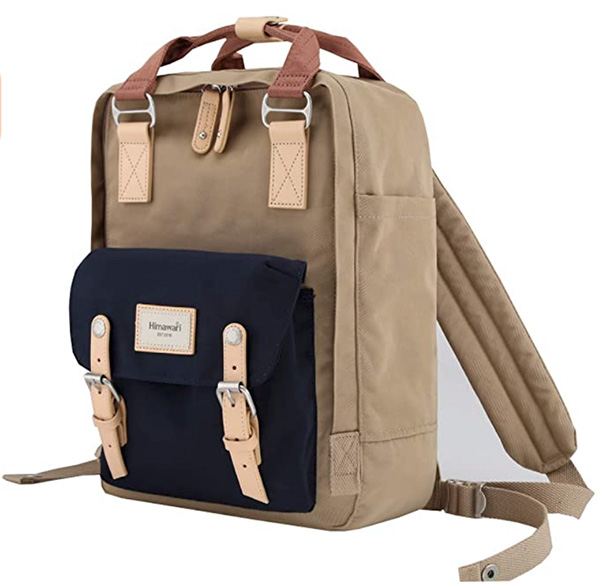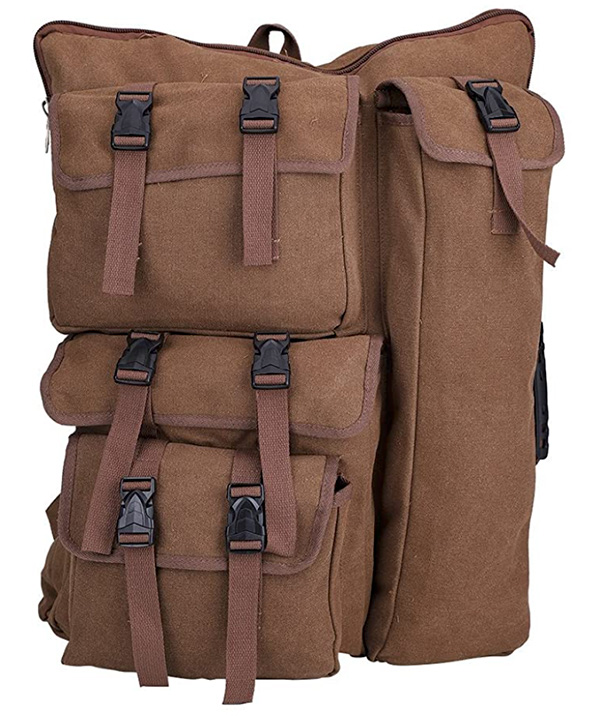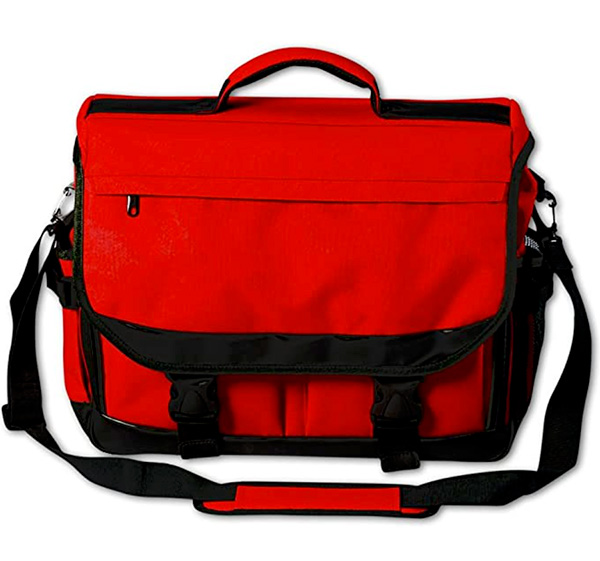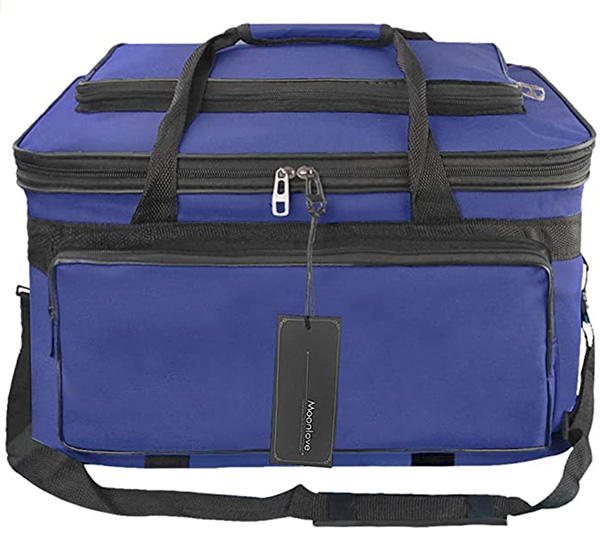Not only can new surroundings and unfamiliar faces inspire us, but we also have the opportunity to witness masterpieces of art and architecture that we knew about only from books. There are no words to describe the feeling of seeing a piece of art in person that we have only admired based on other people’s photographs before; Or to walk into an ancient architecture that we have read about but now have the possibility to give a thorough depiction from our perspective.
No matter if you are a watercolor artist, a drawer, an oil painter, or using any other medium, to proceed in your artistic career it is always helpful to challenge yourself. Travel provides an ideal means to exposing yourself to new topics and subject matter, and to gain a new focus on what you have created up to now. As a travelling artist, you become the best critique of yourself and find new ways to develop.
Art Travel in History
Art Travel is by no means only a current trend. Back in the 17th century, landscape art was on the rise, becoming a dominant genre thanks to the unprecedented growth of the global travel industry. Geographical explorations and colonial expansion were underway, which also brought a big change to the world of art, merging paintingPainting is a fundamental form of visual art that has been practiced for thousands of years. It involves applying pigment to a surface such as canvas, paper, or a wall. Painting can be explored through various styles, techniques, and mediums, each offering unique possibilities for expression and creativity. Historical Background • Ancient Beginnings: The history of painting dates back to More and travel and making travel wall art popular. At that time journeys were a lengthy endeavour, lasting for months or even years.
However, when it comes to art travel, the question remains if it was first the traveller who set out to paint, or if it was the painter who ventured out to travel: With photography not available at that time, the explorers used paintingPainting is a fundamental form of visual art that has been practiced for thousands of years. It involves applying pigment to a surface such as canvas, paper, or a wall. Painting can be explored through various styles, techniques, and mediums, each offering unique possibilities for expression and creativity. Historical Background • Ancient Beginnings: The history of painting dates back to More or sketchingSketching is a fundamental practice in the art world, involving the creation of quick, loose drawings to capture basic shapes, forms, and ideas. It serves as the backbone for more detailed artworks and helps artists refine their concepts. Essential Sketching Supplies • Pencils: Ranging from hard (H) to soft (B) grades, providing a variety of lines and textures. • Paper: More to document what they discovered. They turned to travel paintingPainting is a fundamental form of visual art that has been practiced for thousands of years. It involves applying pigment to a surface such as canvas, paper, or a wall. Painting can be explored through various styles, techniques, and mediums, each offering unique possibilities for expression and creativity. Historical Background • Ancient Beginnings: The history of painting dates back to More to create stories to immortalise the scenery, the customs of foreign cultures, and everything else that was unfamiliar to them. Using their artistic skills and an open mind to record the places around them on their travels, they were able to bring back home precious knowledge to those who couldn’t travel themselves.
Even though the goal was mainly to portray foreign destinations from an objective perspective, what was produced was still a piece of art. The artistic explorers would always include a good pinch of subjectivity in their works, reflecting their mindset. Therefore, explorer art would often lead to political and social interpretations.
Cook’s landing at Botany Bay in 1770
For trading and political reasons, there was great interest in the West to learn more about foreign places. This knowledge was delivered by the men aboard Captain James Cook’s ships in the 18th century, who travelled to the Pacific Ocean and Australia, as well as by other explorers.
Different from the “James Cook art” by draughtsmen alongside the pioneer who were primarily explorers, the 19th century saw an upsurge in artists who decided to travel. Travel and art became more intricately intertwined with each other, as exemplified by the British illustrator Edward Lear, who set out to explore Italy, Albania, Greece, India, Egypt, and other distant lands, producing some of the most stunning travel paintings of peculiarities as he went. He was first and foremost an artist, not a voyager, soldier, explorer, or trader. The art of travel and travel art merged into one: The depictions of distant destinations were no longer driven by underlying motives but were simply subjective illustrations of what was considered worthy of paintingPainting is a fundamental form of visual art that has been practiced for thousands of years. It involves applying pigment to a surface such as canvas, paper, or a wall. Painting can be explored through various styles, techniques, and mediums, each offering unique possibilities for expression and creativity. Historical Background • Ancient Beginnings: The history of painting dates back to More.
This trend got even stronger in the 20th century. The travelling artist didn’t strive for realistic renditions of his surroundings anymore. World-renowned painters such as André Derain, Henri Matisse, Pablo Picasso, and Vincent van Gogh created countless pieces that showed their destinations around Europe without the goal of realistic representation. They used bright and bold colors and distinct prescinded styles to present locations like Somerset gardens, Mountains at Collioure, or landscapes near the village of Barbizon.
Art and travel gained a completely new meaning in Derain’s psychedelic depictions of the city of London, as he deployed his technique of Pointillism to abstract fascinating scenes. Matisse’s landscapes at Collioure featured direct brushstrokes onto an unprimed canvas, appearing entirely abstract. This was the starting point for the artist’s experimentation with new ideas. Van Gogh’s landscapes were directly related to his view of the world and his thoughts about life and death. Like wheat fields, van Gogh visited the subject of Olive trees and Cypress to represent the cycles of life, and with the harvesting, death.
This idea of art being a personal undertaking rather than an objective one has continued till today. While artistic presentations still show the landscapes, architectures, the local, and its people, the pictures are now much more a mirror of what was inside of the artists and not so much what they perceived around them. A travel paintingPainting is a fundamental form of visual art that has been practiced for thousands of years. It involves applying pigment to a surface such as canvas, paper, or a wall. Painting can be explored through various styles, techniques, and mediums, each offering unique possibilities for expression and creativity. Historical Background • Ancient Beginnings: The history of painting dates back to More can be realistic in style but is not bound to photographic accuracy as centuries ago.
Travel Art in the Era of Corona
Covid-19 has changed the way we travel and therefore also impacted travel art. Amid closed borders and cancelled flights, for a time travel came to a standstill. At the peak of the pandemic, the United Nations’ World Tourism Organisation declared that almost all global destinations implemented travel restrictions. Now, with extensive vaccination efforts rolled out in many countries, travel in a restricted form is becoming an option again.
As artists, our creativity is now challenged in a way to look for the exciting in what is right in front of us. Short-distance travel is coming en vogue and we are happy with the small steps out of lockdown that are becoming possible.
The urge to explore and travel is also reflected in the art market, where collectors are seeking more and more travel-related art to allow their eyes to travel afar as long as it is physically not possible. E-commerce booms with sales in travel wall art, art decoArt deco, with its sleek geometry and vibrant colors, epitomizes elegance and sophistication. Originating in the early 20th century, it marked a significant departure from the flowing lines of Art Nouveau to embrace industrial progress and the modern age. This style isn't just about aesthetics; it's a reflection of cultural evolution, blending functionality with opulence in a way that continues More travel posters, and travel doodle art. Both artists and art lovers turn to images and inspirations that refresh the mind. – Travel can be down the road, as much as in another country, or overseas.
Advice for Art Travel
It is great to carry on creating art while you are travelling. As artists, art is such a great part of our lives and with the inspiration that travel brings, it would be a shame not to create art on the road. Today we want to share some insights that we learned as travelling artists that can help you when you venture out no matter how far you get.
Travel Light and Scale Down on Your Supplies
Once you are heading onto the road, you want to be prepared and take the right supplies in your art travel bag with you. The first rule for travelling with art is to scale down your usual supplies. The key is not that any artist must turn to pencils and watercolorsWatercolors are a unique and expressive medium, beloved for their translucency and fluidity. This type of paint is water-based, allowing artists to create delicate washes, vibrant hues, and details with ease. Historical Background • Ancient Origins: Watercolor painting dates back to ancient civilizations, including Egypt and China, where it was used for manuscript illumination and decorative arts. • Renaissance Revival: More since they don’t take up much space in your art travel case, but that you maintain a thread of what you have been enjoying in your home before. It makes a lot of sense to bring what you already use and love, and simply to scale down in volume and weight. Take what you are focusing on into a fresh environment and let it evolve from there.
Regardless of what you usually use as your medium, think basic about your art travel kit. If you are a dry media artist, take pencils for drawingDrawing is a foundational art form that involves creating images on a surface, typically paper, using tools such as pencils, pens, and charcoal. It is a versatile medium that allows artists to express ideas, emotions, and stories through lines, shapes, and shading. Historical Background • Prehistoric Beginnings: The earliest known drawings date back to prehistoric times, with cave drawings found More, some charcoalCharcoal is a popular and expressive medium used in drawing. Known for its deep blacks and range of tones, charcoal allows artists to create dramatic and dynamic artworks with a distinct, textured look. Historical Background • Ancient Beginnings: Charcoal has been used since prehistoric times, with early humans using burnt sticks to create drawings on cave walls. These early works More, and a pad of paper. No need for an eraser since we want to keep the spontaneity of our sketches! The small Caran d’Ache Grafwood Pencil Set in a metal box is ideal, and so are Derwent Fine Art Charcoal Pencils, including a sharpener and tortillion. As for the best drawingDrawing is a foundational art form that involves creating images on a surface, typically paper, using tools such as pencils, pens, and charcoal. It is a versatile medium that allows artists to express ideas, emotions, and stories through lines, shapes, and shading. Historical Background • Prehistoric Beginnings: The earliest known drawings date back to prehistoric times, with cave drawings found More paper, we love the Strathmore 400 Series Drawing Paper Pad, which has a great texture and just the right format for travelling.
Caran d’Ache Grafwood Pencil Set
Derwent Fine Art CharcoalCharcoal is a popular and expressive medium used in drawing. Known for its deep blacks and range of tones, charcoal allows artists to create dramatic and dynamic artworks with a distinct, textured look. Historical Background • Ancient Beginnings: Charcoal has been used since prehistoric times, with early humans using burnt sticks to create drawings on cave walls. These early works More Pencils
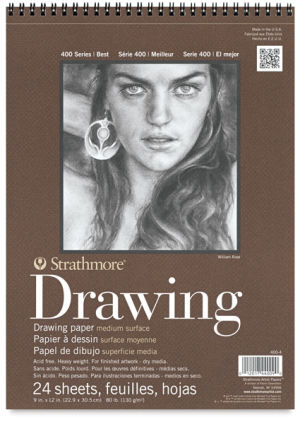 Strathmore 400 Series Drawing Paper Pad
Strathmore 400 Series Drawing Paper Pad
For a wet media artist, thinking basic would mean taking small canvases or paper, basic colors such as the primaries, a black and a white, and a few brushesBrushes are indispensable tools for artists, used to apply paint, create textures, and define details. With a wide range of shapes, sizes, and materials available, understanding the different types of brushes and their uses can significantly enhance an artist's work. Definition and Composition • Brush: An artist's tool made up of a handle, a ferrule (the metal part that connects More. With acrylicsAcrylics are a popular and versatile type of paint used in various art forms. Known for their vibrant colors and quick-drying properties, acrylic paints are favored by artists for their flexibility and ease of use. Historical Background • Invention and Early Use: Acrylic paint was first developed in the 1930s by chemists experimenting with synthetic resins. Initially used in industrial More as a favourite medium, we recommend Chroma Atelier Interactive Artists’ Acrylic Paints, which, besides brilliant pigmentsPigments are essential to the creation of art, providing the vibrant colors that artists use to bring their visions to life. These substances, derived from a variety of natural and synthetic sources, have a rich history and a wide range of applications in both traditional and modern art. Colour Pigments Definition and Composition • Pigment: A material that imparts color More, give artists a versatile set of working properties – you can paint fast or slow, just as you like, and still make corrections after you get home by reactivating the dry paint.
Chroma Atelier Interactive Artists’ AcrylicsAcrylics are a popular and versatile type of paint used in various art forms. Known for their vibrant colors and quick-drying properties, acrylic paints are favored by artists for their flexibility and ease of use. Historical Background • Invention and Early Use: Acrylic paint was first developed in the 1930s by chemists experimenting with synthetic resins. Initially used in industrial More
With gouacheGouache is a painting medium similar to watercolor but with a higher pigment content, resulting in a more opaque and vibrant finish. Known for its versatility and rich texture, gouache is favored by artists for its ability to create both detailed illustrations and bold, expressive works. Historical Background Gouache has a long history, used by artists and illustrators across various More as the main medium, M. Graham offers the perfect basic travel set containing 5 colors, which is all you need when paintingPainting is a fundamental form of visual art that has been practiced for thousands of years. It involves applying pigment to a surface such as canvas, paper, or a wall. Painting can be explored through various styles, techniques, and mediums, each offering unique possibilities for expression and creativity. Historical Background • Ancient Beginnings: The history of painting dates back to More en plein airThe French term “en plein air” means “out-doors”. Plein air painting therefore refers to the practice of painting an entire finished picture out of doors. Artists have long worked out of doors to create landscape sketches for the preparation of further studio work. The plein air approach, finishing entire pictures out-doors, however, began only in the 19th century, initiated by More.
M. Graham Artists’ GouacheGouache is a painting medium similar to watercolor but with a higher pigment content, resulting in a more opaque and vibrant finish. Known for its versatility and rich texture, gouache is favored by artists for its ability to create both detailed illustrations and bold, expressive works. Historical Background Gouache has a long history, used by artists and illustrators across various More – Basic Set
When choosing the best canvas for your adventure, the key is to choose small formats, such as the Blick Premier Stretched Cotton Canvas line for creating top travel canvas art. Or you might opt for the Genie Collapsible Canvas, which can be disassembled or assembled without tools in only a couple of minutes. It is easy to carry it in a reusable tube, making paintingPainting is a fundamental form of visual art that has been practiced for thousands of years. It involves applying pigment to a surface such as canvas, paper, or a wall. Painting can be explored through various styles, techniques, and mediums, each offering unique possibilities for expression and creativity. Historical Background • Ancient Beginnings: The history of painting dates back to More and travel merge seamlessly.
Blick Premier Stretched Cotton Canvas
Genie Collapsible Canvas
If your preferred medium is watercolorsWatercolors are a unique and expressive medium, beloved for their translucency and fluidity. This type of paint is water-based, allowing artists to create delicate washes, vibrant hues, and details with ease. Historical Background • Ancient Origins: Watercolor painting dates back to ancient civilizations, including Egypt and China, where it was used for manuscript illumination and decorative arts. • Renaissance Revival: More, you have more choices, since there are great watercolor travel sets available that are specially designed for en plein airThe French term “en plein air” means “out-doors”. Plein air painting therefore refers to the practice of painting an entire finished picture out of doors. Artists have long worked out of doors to create landscape sketches for the preparation of further studio work. The plein air approach, finishing entire pictures out-doors, however, began only in the 19th century, initiated by More paintingPainting is a fundamental form of visual art that has been practiced for thousands of years. It involves applying pigment to a surface such as canvas, paper, or a wall. Painting can be explored through various styles, techniques, and mediums, each offering unique possibilities for expression and creativity. Historical Background • Ancient Beginnings: The history of painting dates back to More. The best travel watercolor set is the Sennelier French Artists’ Watercolor Set with 18 half pans of highly pigmented aquarelle paint, designed to create perfect washes of pure transparent color without hard edges, and a set of Da Vinci Red Sable Watercolor Brushes.
Sennelier French Artists’ Watercolor Set
Da Vinci Russian Red Sable Watercolor BrushesBrushes are indispensable tools for artists, used to apply paint, create textures, and define details. With a wide range of shapes, sizes, and materials available, understanding the different types of brushes and their uses can significantly enhance an artist's work. Definition and Composition • Brush: An artist's tool made up of a handle, a ferrule (the metal part that connects More
The easiest way to travel with water for your aquarelle travel paintingPainting is a fundamental form of visual art that has been practiced for thousands of years. It involves applying pigment to a surface such as canvas, paper, or a wall. Painting can be explored through various styles, techniques, and mediums, each offering unique possibilities for expression and creativity. Historical Background • Ancient Beginnings: The history of painting dates back to More projects is water brushesBrushes are indispensable tools for artists, used to apply paint, create textures, and define details. With a wide range of shapes, sizes, and materials available, understanding the different types of brushes and their uses can significantly enhance an artist's work. Definition and Composition • Brush: An artist's tool made up of a handle, a ferrule (the metal part that connects More, which contain water in the handle. We love the Sakura Koi Water Brush which is separated into two parts – a fine, flexible brush tip and a barrel handle with a plug to carry water. This makes this best brush pen great for controlled blending, highlighting, and shading. You can create great washes with this travel paintingPainting is a fundamental form of visual art that has been practiced for thousands of years. It involves applying pigment to a surface such as canvas, paper, or a wall. Painting can be explored through various styles, techniques, and mediums, each offering unique possibilities for expression and creativity. Historical Background • Ancient Beginnings: The history of painting dates back to More kit by gently squeezing more water to the top of the brush, without the danger of spilling any water!
Keep a Creative Art Journal
What all artists can make good use of is an art journal travel kit, including a travel diary, a pencil or markers, and some aquarelle pencils for spontaneous travelling paintings and sketches. No artist on the road should lack a travel diary journal, since it is fantastic for marking down your travel paintingPainting is a fundamental form of visual art that has been practiced for thousands of years. It involves applying pigment to a surface such as canvas, paper, or a wall. Painting can be explored through various styles, techniques, and mediums, each offering unique possibilities for expression and creativity. Historical Background • Ancient Beginnings: The history of painting dates back to More ideas wherever you are. In case you don’t keep a daily art journal yet, travelling is just the right time to get started!
If you like watercolorsWatercolors are a unique and expressive medium, beloved for their translucency and fluidity. This type of paint is water-based, allowing artists to create delicate washes, vibrant hues, and details with ease. Historical Background • Ancient Origins: Watercolor painting dates back to ancient civilizations, including Egypt and China, where it was used for manuscript illumination and decorative arts. • Renaissance Revival: More, we recommend you take a special watercolor travel journal, such as the Strathmore Watercolor Travel Journal, and a water brush.
Strathmore Watercolor Travel Journal
Suitable for any medium is the Strathmore Art Journal line, for example, the Strathmore Softcover Mixed Media Art Journal. The archival quality paper is made from 100 per cent cotton fibre and is acid-free, excellent for watercolorsWatercolors are a unique and expressive medium, beloved for their translucency and fluidity. This type of paint is water-based, allowing artists to create delicate washes, vibrant hues, and details with ease. Historical Background • Ancient Origins: Watercolor painting dates back to ancient civilizations, including Egypt and China, where it was used for manuscript illumination and decorative arts. • Renaissance Revival: More, gouacheGouache is a painting medium similar to watercolor but with a higher pigment content, resulting in a more opaque and vibrant finish. Known for its versatility and rich texture, gouache is favored by artists for its ability to create both detailed illustrations and bold, expressive works. Historical Background Gouache has a long history, used by artists and illustrators across various More, acrylicsAcrylics are a popular and versatile type of paint used in various art forms. Known for their vibrant colors and quick-drying properties, acrylic paints are favored by artists for their flexibility and ease of use. Historical Background • Invention and Early Use: Acrylic paint was first developed in the 1930s by chemists experimenting with synthetic resins. Initially used in industrial More, colored pencilsColored pencils are a versatile and accessible medium, popular among artists for their ease of use and vibrant hues. These tools enable precise control and rich layering, making them ideal for detailed work and expressive compositions. Historical Background • Early Development: The history of colored pencils dates back to the early 19th century, with early versions used primarily for marking More, markers, pastels, and collageCollage refers to an art form where different materials are combined to create a single artwork. This technique often uses paper, fabric, photographs, and other found objects. It brings diverse elements together in a visually engaging way. History and Origin The concept of collage dates back to ancient times. Early cultures used materials like gold leaf and fabric in their More. Alternatively, you can use good quality paper and cardboard to make your DIYDIY, or Do It Yourself, refers to the practice of creating, building, or repairing things on your own, without professional help. It encompasses a wide range of activities, from home improvement to crafting and art projects. Benefits of DIY DIY projects offer several advantages: • Cost Savings: You can save money by doing tasks yourself instead of hiring professionals. • More travel journal.
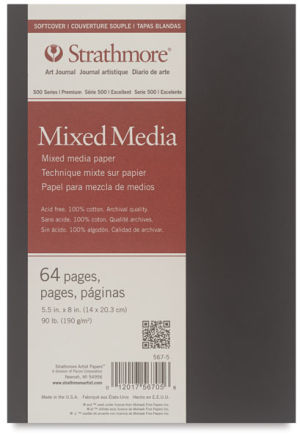 Strathmore Softcover Mixed MediaMixed media involves combining various art materials and techniques within a single artwork. This approach allows artists to explore diverse textures, effects, and expressions. Basic Components of Mixed Media • Traditional Media: Includes paints, inks, and pencils. • Non-Traditional Media: Items like fabric, metal, and found objects. • Digital Elements: Incorporating digital prints or using software for certain effects. Techniques More Art Journal
Strathmore Softcover Mixed MediaMixed media involves combining various art materials and techniques within a single artwork. This approach allows artists to explore diverse textures, effects, and expressions. Basic Components of Mixed Media • Traditional Media: Includes paints, inks, and pencils. • Non-Traditional Media: Items like fabric, metal, and found objects. • Digital Elements: Incorporating digital prints or using software for certain effects. Techniques More Art Journal
Markers are essential supplies for art journaling since they are easy to handle. You will enjoy the Sakura Pigma Micron pens, with their durable, flexible plastic nib. The quick-drying, fade-resistant inkInk, a liquid or paste used for writing, drawing, and printing, has played a crucial role in communication and artistic expression throughout history. Made from various pigments and dyes, ink allows for the transfer of text and images onto surfaces such as paper, fabric, and other materials. Types of Ink There are several types of ink, each serving different purposes More is bleed proof and waterproof, making it perfect to use on the road.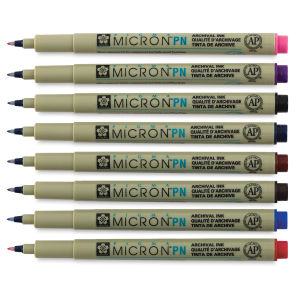
Sakura Pigma Micron PN Pens
A travel diary paintingPainting is a fundamental form of visual art that has been practiced for thousands of years. It involves applying pigment to a surface such as canvas, paper, or a wall. Painting can be explored through various styles, techniques, and mediums, each offering unique possibilities for expression and creativity. Historical Background • Ancient Beginnings: The history of painting dates back to More or drawingDrawing is a foundational art form that involves creating images on a surface, typically paper, using tools such as pencils, pens, and charcoal. It is a versatile medium that allows artists to express ideas, emotions, and stories through lines, shapes, and shading. Historical Background • Prehistoric Beginnings: The earliest known drawings date back to prehistoric times, with cave drawings found More is great to document your thoughts and observations while you are on the road, sitting in a train, or a café waiting for your lunch.
This artist kit is free of mess or smell, and your travel journal scrapbook is easy to tuck into your bag. Combining travel and art can be that easy! You will love presenting your travel art journal to friends and family to tell your stories once you get home. The travel sketch journal will provide precious reference if you want to transfer a quick sketch from your single pages into a large-scale travel wall paintingPainting is a fundamental form of visual art that has been practiced for thousands of years. It involves applying pigment to a surface such as canvas, paper, or a wall. Painting can be explored through various styles, techniques, and mediums, each offering unique possibilities for expression and creativity. Historical Background • Ancient Beginnings: The history of painting dates back to More.
Have Your Supplies Organized
If you have trouble organizing your pencils, watercolor pencils, markers, brushesBrushes are indispensable tools for artists, used to apply paint, create textures, and define details. With a wide range of shapes, sizes, and materials available, understanding the different types of brushes and their uses can significantly enhance an artist's work. Definition and Composition • Brush: An artist's tool made up of a handle, a ferrule (the metal part that connects More, or other supplies for artists, a good solution can be found in an art suppliesArt supplies are the tools and materials artists use to create their works. They range from basic items like pencils and paper to more specialized equipment like airbrushes and printing presses. Basic Art Supplies • Pencils: Available in various grades, from hard (H) to soft (B). Essential for sketching and detailed drawing. • Erasers: Include kneaded, rubber, and precision erasers. More organizer like a pencil roll case which makes keeping your essentials a simple process. A great art supply storage is the Derwent Pencil Wrap which offers a wide range of different compartments, that allows you to take the vital supplies of your studio away with you. Not only does the canvas pencil wrap tightly hold your materials, but it also reduces the risk of breakage whilst saving space in your bag.
Derwent Pencil Wrap
Find the Best Art Supply Travel Bag
Being on the go with your basic art travel kit does not have to be a cumbersome endeavour if you have the right art supply organizer for transporting your tools. The best art supply bag will bridge well thought out organization and comfort for maximum enjoyment of your art voyage. It is important to consider what is the right format for you and your art travel kit – is it a messenger bag for art suppliesArt supplies are the tools and materials artists use to create their works. They range from basic items like pencils and paper to more specialized equipment like airbrushes and printing presses. Basic Art Supplies • Pencils: Available in various grades, from hard (H) to soft (B). Essential for sketching and detailed drawing. • Erasers: Include kneaded, rubber, and precision erasers. More, a briefcase-style carrier such as an art suitcase, a backpack, or an artist tote bag?
The best backpack for artists who need a compact travel kit is the Himawari Waterproof bag. Although compact in size, the art supply bag can carry much more than you might imagine. You can fit sketchbooks, a small canvas, your entire travel drawingDrawing is a foundational art form that involves creating images on a surface, typically paper, using tools such as pencils, pens, and charcoal. It is a versatile medium that allows artists to express ideas, emotions, and stories through lines, shapes, and shading. Historical Background • Prehistoric Beginnings: The earliest known drawings date back to prehistoric times, with cave drawings found More kit, a travel watercolor kit, and even a laptop or a digital artDigital art refers to a range of artistic works and practices that use digital technology as an essential part of the creative or presentation process. Since the 1970s, various names have been used to describe the process, including computer art and multimedia art. Digital art is itself placed under the larger umbrella term of new media art. The digital art More journal in the boxy interior for your carry-on art projects. Smaller tools of your professional art kit can fit into its numerous pouches on the outside and inside. It is made of waterproof, scratch-resistant nylon, and comfortable to carry due to its padded, adjustable shoulder straps and the padded backing. The extended straps can be buckled so that the straps will not loosen.
Himawari Backpack
If you have trouble scaling down your art suppliesArt supplies are the tools and materials artists use to create their works. They range from basic items like pencils and paper to more specialized equipment like airbrushes and printing presses. Basic Art Supplies • Pencils: Available in various grades, from hard (H) to soft (B). Essential for sketching and detailed drawing. • Erasers: Include kneaded, rubber, and precision erasers. More kit and decide to take a little more, the Middle 4K Sketchpad Art Carrying Bag is just right for your big art kit. Made of heavy canvas, the pockets are great for the storage of art suppliesArt supplies are the tools and materials artists use to create their works. They range from basic items like pencils and paper to more specialized equipment like airbrushes and printing presses. Basic Art Supplies • Pencils: Available in various grades, from hard (H) to soft (B). Essential for sketching and detailed drawing. • Erasers: Include kneaded, rubber, and precision erasers. More such as drawingDrawing is a foundational art form that involves creating images on a surface, typically paper, using tools such as pencils, pens, and charcoal. It is a versatile medium that allows artists to express ideas, emotions, and stories through lines, shapes, and shading. Historical Background • Prehistoric Beginnings: The earliest known drawings date back to prehistoric times, with cave drawings found More pads, your paintingPainting is a fundamental form of visual art that has been practiced for thousands of years. It involves applying pigment to a surface such as canvas, paper, or a wall. Painting can be explored through various styles, techniques, and mediums, each offering unique possibilities for expression and creativity. Historical Background • Ancient Beginnings: The history of painting dates back to More journal, a canvas, panels, a lightweight folding easel, and other larger items. The front pockets are ideal for storing brushesBrushes are indispensable tools for artists, used to apply paint, create textures, and define details. With a wide range of shapes, sizes, and materials available, understanding the different types of brushes and their uses can significantly enhance an artist's work. Definition and Composition • Brush: An artist's tool made up of a handle, a ferrule (the metal part that connects More, pencils, and art journaling supplies. You can carry your craft storage bag either as a backpack on your shoulders or use the side handle to carry it with your hand.
Middle 4K Canvas DrawingDrawing is a foundational art form that involves creating images on a surface, typically paper, using tools such as pencils, pens, and charcoal. It is a versatile medium that allows artists to express ideas, emotions, and stories through lines, shapes, and shading. Historical Background • Prehistoric Beginnings: The earliest known drawings date back to prehistoric times, with cave drawings found More Board Bag
Among the best crossbody bags for travel is the Royal & Langnickel Essentials Art Cargo Bag, which was designed by artists for artists. The art suppliesArt supplies are the tools and materials artists use to create their works. They range from basic items like pencils and paper to more specialized equipment like airbrushes and printing presses. Basic Art Supplies • Pencils: Available in various grades, from hard (H) to soft (B). Essential for sketching and detailed drawing. • Erasers: Include kneaded, rubber, and precision erasers. More bag measures 15 by 20 inches and can be expanded to fit a variety of supplies such as your visual art journal, your watercolorsWatercolors are a unique and expressive medium, beloved for their translucency and fluidity. This type of paint is water-based, allowing artists to create delicate washes, vibrant hues, and details with ease. Historical Background • Ancient Origins: Watercolor painting dates back to ancient civilizations, including Egypt and China, where it was used for manuscript illumination and decorative arts. • Renaissance Revival: More, palette, and acrylicsAcrylics are a popular and versatile type of paint used in various art forms. Known for their vibrant colors and quick-drying properties, acrylic paints are favored by artists for their flexibility and ease of use. Historical Background • Invention and Early Use: Acrylic paint was first developed in the 1930s by chemists experimenting with synthetic resins. Initially used in industrial More in its main compartment. Zippered pockets of different sizes help the storage of art suppliesArt supplies are the tools and materials artists use to create their works. They range from basic items like pencils and paper to more specialized equipment like airbrushes and printing presses. Basic Art Supplies • Pencils: Available in various grades, from hard (H) to soft (B). Essential for sketching and detailed drawing. • Erasers: Include kneaded, rubber, and precision erasers. More, so does the high-quality brush warp and further holders for art materials and tools. The art suppliesArt supplies are the tools and materials artists use to create their works. They range from basic items like pencils and paper to more specialized equipment like airbrushes and printing presses. Basic Art Supplies • Pencils: Available in various grades, from hard (H) to soft (B). Essential for sketching and detailed drawing. • Erasers: Include kneaded, rubber, and precision erasers. More holder is made from heavy canvas, is extra sturdy, just right for heavy load. You can carry your art storage bag crossbody, over your shoulder, or in your hand with the handle on the top.
Royal & Langnickel Essentials Art Cargo Carry Bag
For more bulky items of your art supply kit, you can consider an art suppliesArt supplies are the tools and materials artists use to create their works. They range from basic items like pencils and paper to more specialized equipment like airbrushes and printing presses. Basic Art Supplies • Pencils: Available in various grades, from hard (H) to soft (B). Essential for sketching and detailed drawing. • Erasers: Include kneaded, rubber, and precision erasers. More carrying case or art supply tote bags such as the Clobeau Waterproof Art Tote, which is available in many different colors. The art suppliesArt supplies are the tools and materials artists use to create their works. They range from basic items like pencils and paper to more specialized equipment like airbrushes and printing presses. Basic Art Supplies • Pencils: Available in various grades, from hard (H) to soft (B). Essential for sketching and detailed drawing. • Erasers: Include kneaded, rubber, and precision erasers. More carrying bag is made of heavy-duty canvas with a large interior space and numerous exterior pockets for brushesBrushes are indispensable tools for artists, used to apply paint, create textures, and define details. With a wide range of shapes, sizes, and materials available, understanding the different types of brushes and their uses can significantly enhance an artist's work. Definition and Composition • Brush: An artist's tool made up of a handle, a ferrule (the metal part that connects More, pencils, pallets, your portable watercolor kit, your art travel journal, and other tools. The main compartment is reinforced by steel wire which can be collapsed when the bag is empty to save space. Since the exterior pockets are slim, the artist tote bag maintains a nice shape even when loaded with a lot of materials. Perfect for the artist on the go, the bag has a padded handle and a detachable shoulder strap so that it can be carried as a shoulder bag.
Clobeau Waterproof Art Tote
Get Used to Making Art in Public
When making art in public, naturally people will be interested and come looking over your shoulder. This can be a problem for many of us or even push us out of our zone of creativity. It can get hard to concentrate and create as if in the privacy of your studio. The trick here is to make the spectators part of your artistic experience. Accept that the atmosphere is a different one than at home, smile and don’t linger upon the interruption. Rather take the interruption as an impulse for the next brushstroke or pencil line.
Be Flexible with Your Artistic Schedule
Don’t limit your artistic activities like sketchingSketching is a fundamental practice in the art world, involving the creation of quick, loose drawings to capture basic shapes, forms, and ideas. It serves as the backbone for more detailed artworks and helps artists refine their concepts. Essential Sketching Supplies • Pencils: Ranging from hard (H) to soft (B) grades, providing a variety of lines and textures. • Paper: More, drawingDrawing is a foundational art form that involves creating images on a surface, typically paper, using tools such as pencils, pens, and charcoal. It is a versatile medium that allows artists to express ideas, emotions, and stories through lines, shapes, and shading. Historical Background • Prehistoric Beginnings: The earliest known drawings date back to prehistoric times, with cave drawings found More, or paintingPainting is a fundamental form of visual art that has been practiced for thousands of years. It involves applying pigment to a surface such as canvas, paper, or a wall. Painting can be explored through various styles, techniques, and mediums, each offering unique possibilities for expression and creativity. Historical Background • Ancient Beginnings: The history of painting dates back to More to a fixed schedule. While it makes sense to reserve some spots in your itinerary for more ambitious projects when you can work focused en plein airThe French term “en plein air” means “out-doors”. Plein air painting therefore refers to the practice of painting an entire finished picture out of doors. Artists have long worked out of doors to create landscape sketches for the preparation of further studio work. The plein air approach, finishing entire pictures out-doors, however, began only in the 19th century, initiated by More, you don’t have to restrict yourself to this time. Sometimes you will create the greatest sketches when you don’t plan on it beforehand. Maybe you walk past a scene that is touching your soul and instead of pulling out the camera, you might as well sit down for a few minutes to capture it in your art travel journal.
Or you might as well use the early morning hours before the main activities of the day to draw from memory or go out and sit in the grass to get inspired. The same is true for those quiet moments as the day winds down when you might have a little spare time to spend with your colors and a canvas. Great moments for sketchingSketching is a fundamental practice in the art world, involving the creation of quick, loose drawings to capture basic shapes, forms, and ideas. It serves as the backbone for more detailed artworks and helps artists refine their concepts. Essential Sketching Supplies • Pencils: Ranging from hard (H) to soft (B) grades, providing a variety of lines and textures. • Paper: More are further during the time spent on a train or airplane, or even at a train station when your train happens to be delayed.
The trick in travelling with art is to always be prepared. If you have chosen your artist bag wisely, you will be able to pull out your sketchbook at any time and to catch the spur of the moment. Have your field kit ready so that you can grab and use it when those moments of inspiration happen to come up. Always keep your eyes open wherever you go and catch those sketchingSketching is a fundamental practice in the art world, involving the creation of quick, loose drawings to capture basic shapes, forms, and ideas. It serves as the backbone for more detailed artworks and helps artists refine their concepts. Essential Sketching Supplies • Pencils: Ranging from hard (H) to soft (B) grades, providing a variety of lines and textures. • Paper: More opportunities as you go along.
You might also enjoy reading the following posts by Pigment Pool:
600 Art and Drawing Ideas to Ignite Your Imagination
25 Facts to Know About Egon Schiele: Klimt, Women, and Austrian Expressionism
A Brief History of Colour Pigments
The Art of Hanging Art: How to Follow and Break Rules
The Best Watercolor Paint Set for Artists and Hobbyists In 2022
The Best Sketching Pencils for Artists and Beginners in 2022
The Best Art Markers for Hobbyists and Professionals in 2022
This article may contain compensated links. Please read Disclaimer for more info. As an Amazon Associate, I earn from qualifying purchases.

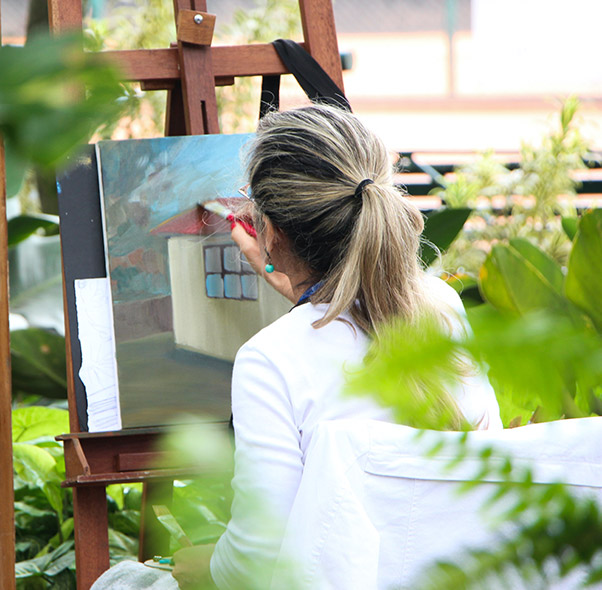
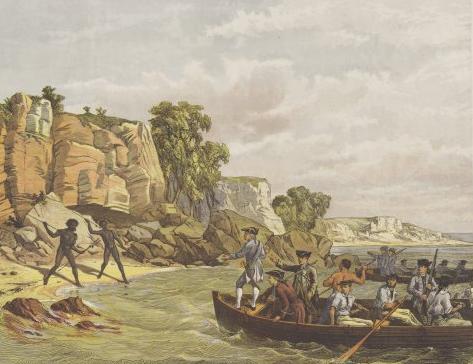

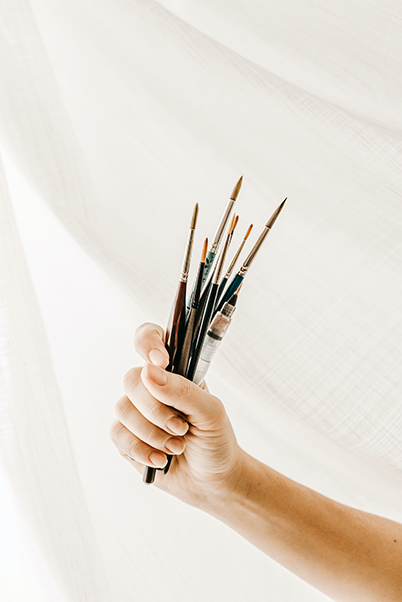
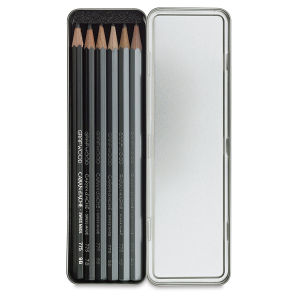

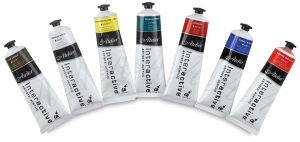
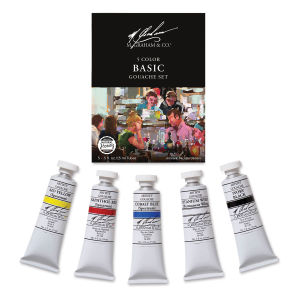
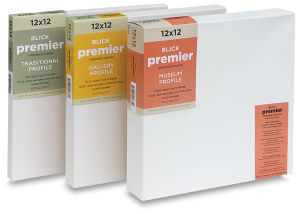
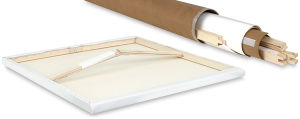
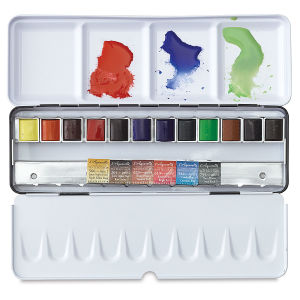
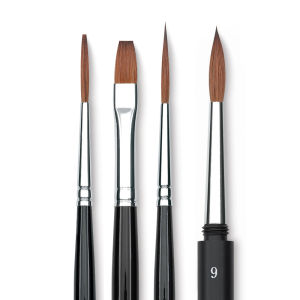
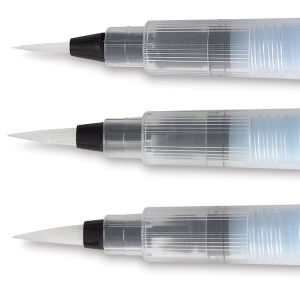 Sakura Koi Water Brush
Sakura Koi Water Brush